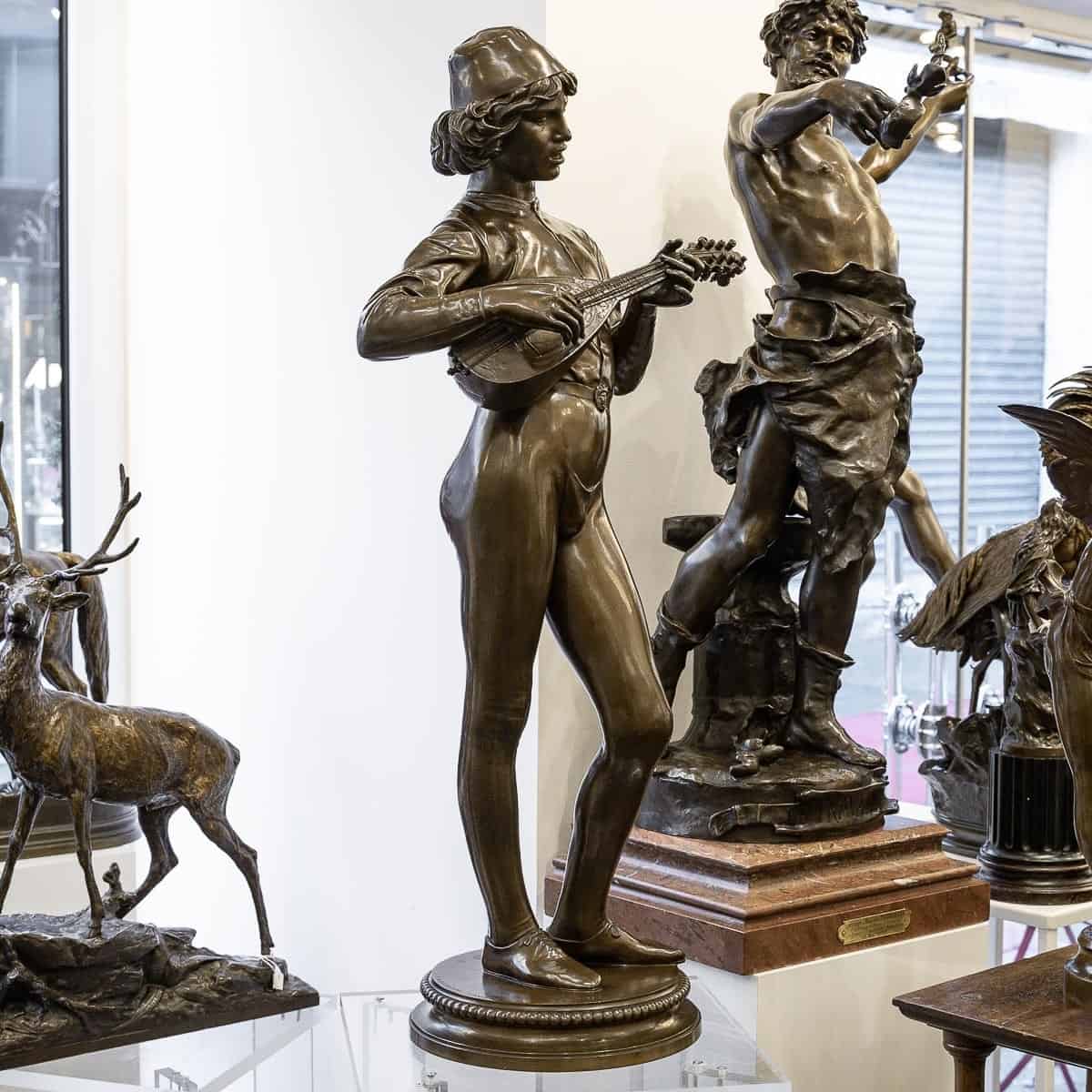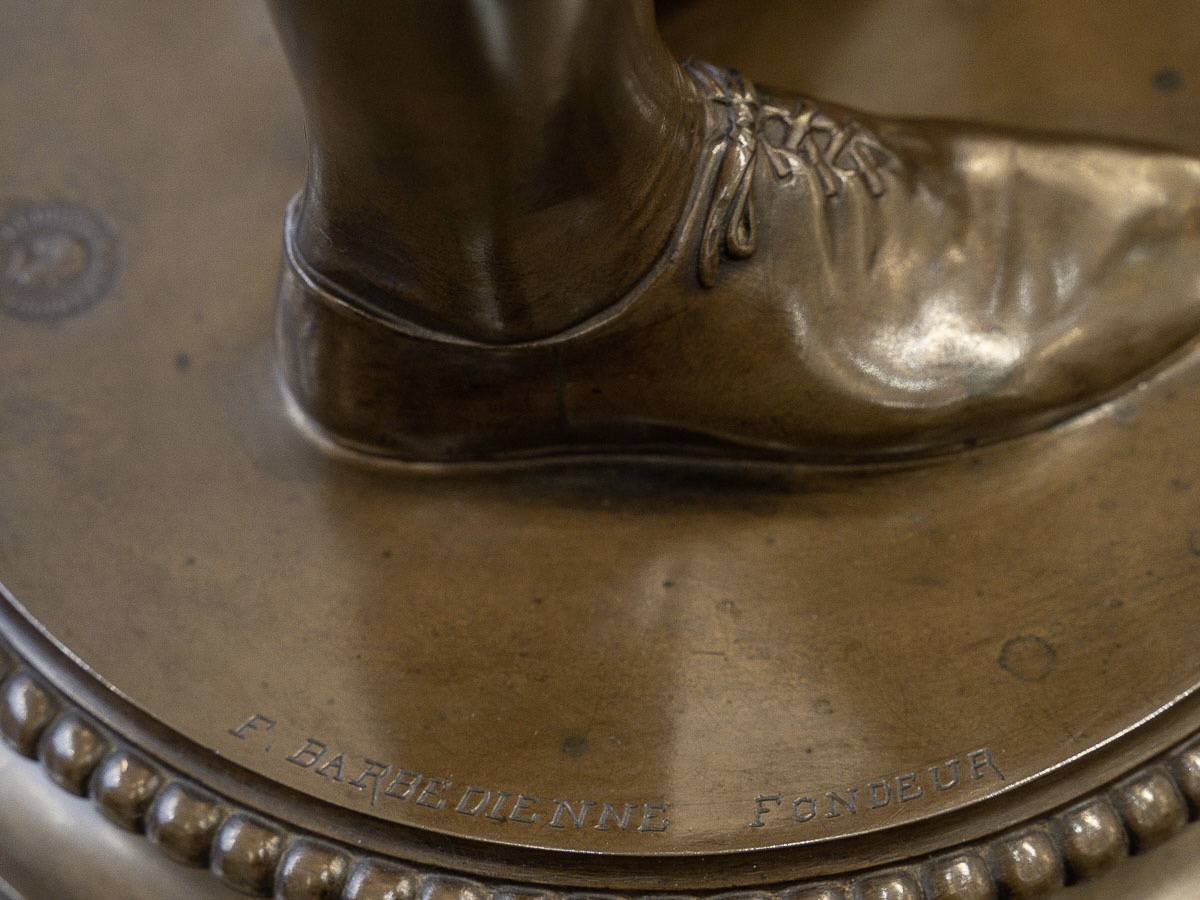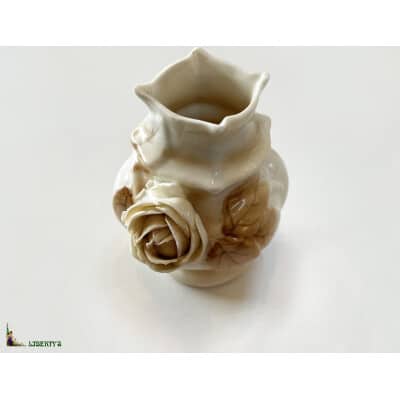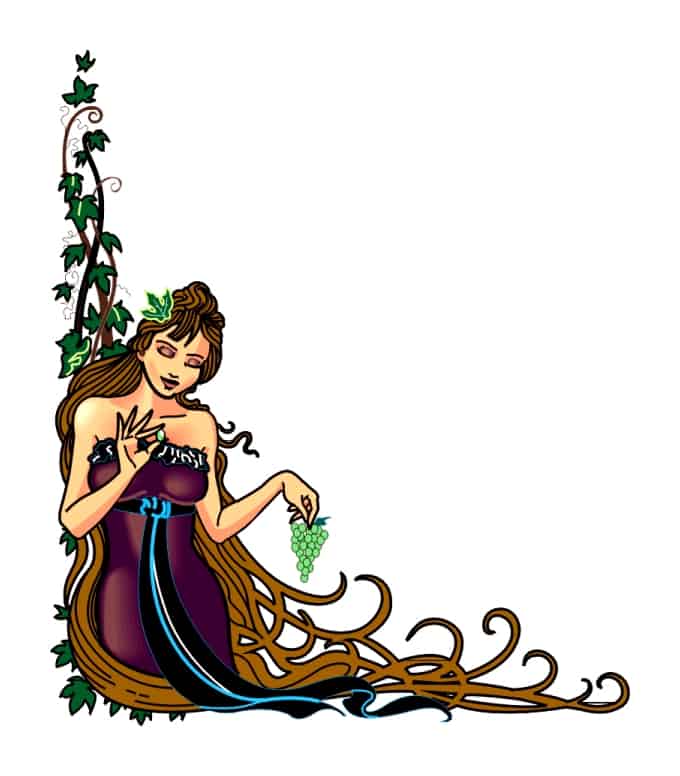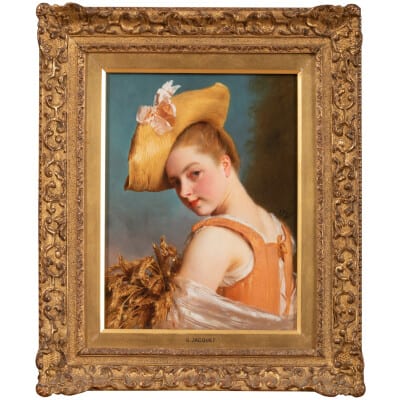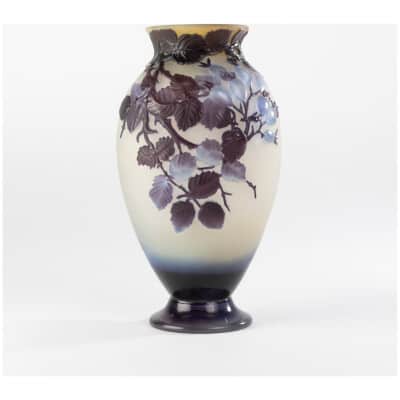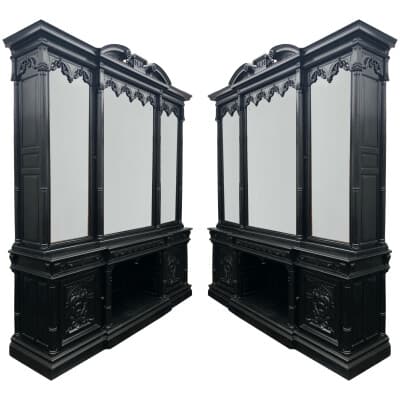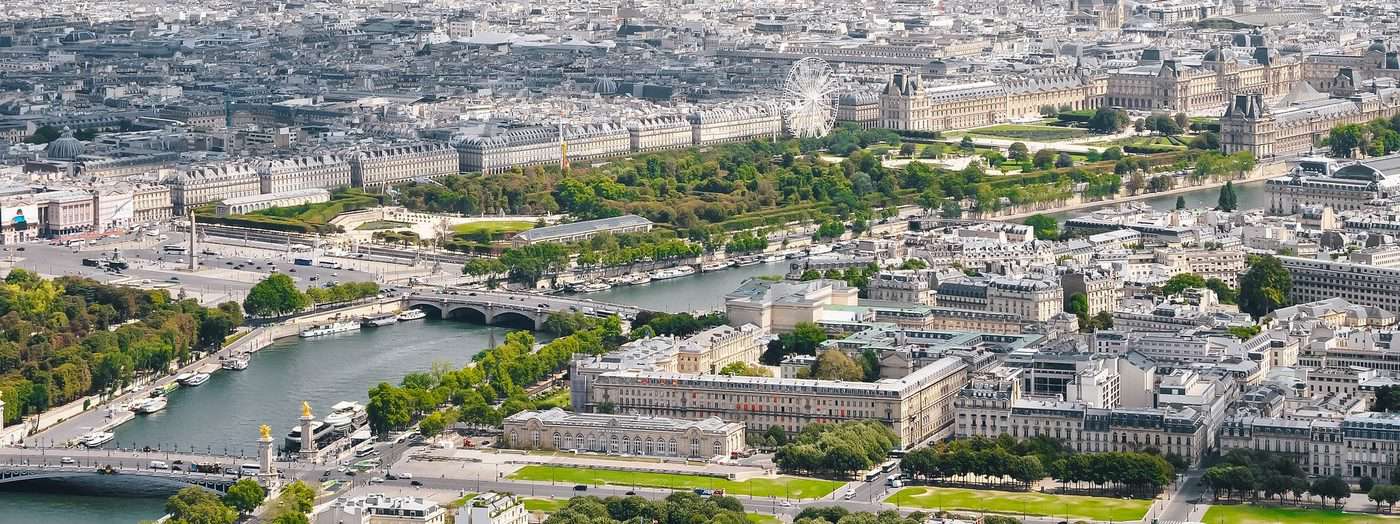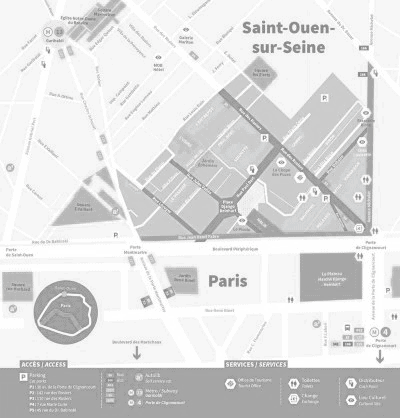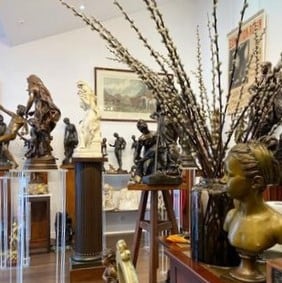
cATaLogUE Des PucEs
Sculpture – The Florentine Singer, Paul Dubois (1829-1905) – Bronze
Availability:
IN STOCK€4.500,00
Bronze print with brown patina, depicting a young man, named the “Florentine Singer” , by Paul Dubois (1829-1905).
This sculpture is classic art movement , it focuses on the graceful and elegant silhouette of a young boy with smooth and refined forms, contrasted with the great finesse of the detail of the clothing and accessories.
A slight feeling of archaism combines with perfect finesse of treatment.
Signature of the sculptor “P.DUBOIS” , in the hollow, on the terrace.
Dated bronze "1865" , following the signature.
Foundry Mark “F. BARBEDIENNE FOUNDER » and Stamp of “Mechanical Reduction A. Colas » .
Old edition bronze, second part of the period XIX th century.
Very good state of preservation and patina.
Height : 76 cm
Bronze print, with brown patina, depicting a young man, named the “Florentin Singer” by Paul Dubois (1829-1905).
This sculpture is of classic artistic movement , it focuses on the graceful and elegant silhouette of a young boy with smooth and refined forms, contrasted with the great finesse of the detail of the clothing and accessories.
Signature of the sculptor “P.DUBOIS” , hollow, on the oval terrace.
Dated bronze "1865" , following the signature.
Founder's mark “F. BARBEDIENNE FOUNDER” and Stamp of “Mechanical Reduction A. Collas” .
Old bronze edition, period second part of the 19th century.
Very good state of conservation and patina.
Height : 76 cm

Paul Dubois (1829 – 1905)
Paul Dubois is a famous sculptor and French painter.
Born July 18, 1829 in Nogent-sur-Seine, Paul Dubois is the son of François Antoine Dubois (1798-1868), royal notary, mayor of Nogent-sur-Seine and general councilor of Aube, and the great-nephew of the sculptor Jean-Baptiste Pigalle .
After studying law, he was admitted to the Paris School of Fine Arts in the Workshop of Armand Toussaint .
He leaves to train Rome and Florence for four years, where he was influenced by Italian Renaissance art.
It debuted at the Salon of 1860 , exposing the “ Bust of the Countess of B. and Child " .
He obtained a medal for his first two statues, “ Saint Jean Baptist " and " Narcissus in the bath » , in 1863.
Deeply influenced by Italy and Renaissance art , he became a leader of the so-called “ Florentines » , emulators of their predecessors of Quattrocento .
Back to Paris , marked by his stay in Italy, Paul Dubois attracted great success from his beginnings with refined works, inspired by the Italian Renaissance .
It is in this vein that he models the “Florentine Singer”, and obtains with him, the “Medal of Honor” du Living room 1865 .
In 1865 and 1876, Paul Dubois obtained a Medal of Honor at the Salon des Beaux-Arts .
He is then elected member of the Academy of Fine Arts in 1876 .
In 1873, Paul Dubois Dubois was appointed curator of the Luxembourg Museum .
In 1878, he succeeded Eugène Guillaume as director of the Paris School of Fine Arts , where his students will be Fabio Stecchi, and Camille Claudel until she met Auguste Rodin in 1884.
His Monument to « Jeanne D'Arc " , inaugurated on the square in front of Reims Cathedral in 1896, also contributed to its reputation and earned it promotion Grand Cross of the Legion of Honor by the President of the Republic, Félix Faure.
Paul Dubois died on May 23, 1905 in Paris.
He is buried in the Père-Lachaise Cemetery, (9edivision).
His funerary monument is decorated with a bronze statue by the sculptor representing his mother, Claudine Sophie.
Paul Dubois (1829 – 1905)
Paul Dubois is a famous French sculptor and painter.
Born July 18, 1829 in Nogent-sur-Seine, Paul Dubois is the son of François Antoine Dubois (1798-1868), royal notary, mayor of Nogent-sur-Seine and general councilor of Aube, and the great-nephew by the sculptor Jean-Baptiste Pigalle .
After studying law, he was admitted to the School of Fine Arts in Paris in the Atelier of Armand Toussaint .
He went to train in Rome and Florence for four years, where he was influenced by the art of the Italian Renaissance.
He began at the Salon of 1860 , exhibiting the “Bust of the Countess of B. and a Child”.
He obtained a medal for his first two statues “Saint John the Baptist” and “Narcissus in the bath” in 1863.
Deeply influenced by Italy and Renaissance art , he became a leader of the so-called “Florentines” sculptors, emulators of them Quattrocento predecessors.
Returning to Paris , marked by his stay in Italy, Paul Dubois attracted great success from his beginnings with refined works, inspired by the Italian Renaissance.
It is in this vein that he modeled the “Florentin Singer”, and obtained with him the “Medal of Honor” from the Salon of 1865 .
In 1865 and 1876, Paul Dubois obtained a Medal of Honor at the Fine Arts Salon .
He was then elected a member of the Academy of Fine Arts in 1876.
In 1873, Paul Dubois Dubois was appointed curator of the Luxembourg Museum .
In 1878, he succeeded Eugène Guillaume as director of the School of Fine Arts in Paris , where his students were Fabio Stecchi, and Camille Claudel until the latter's meeting with Auguste Rodin in 1884 .
Her Monument to “Joan of Arc”, inaugurated on the square in front of Reims Cathedral in 1896, also contributes to her fame and earned her the promotion of Grand Cross of the Legion of Honor by the President of the Republic Félix Faure.
Paul Dubois died on May 23, 1905 in Paris.
He is buried in the Père-Lachaise Cemetery, (9th division).
His funeral monument is decorated with a bronze statue by the sculptor representing his mother, Claudine Sophie.
Availability:
IN STOCK| Locations | |
|---|---|
| Century | |
| Style | |
| Object Type |
Questions and general requests
There are no inquiries yet.
Share this sheet:
Similar products
-
-
Objects of Collections
Jean Gustave Jacquet (1846-1909) - Young Girl With A Hat
-
Objects of Collections
Emile Gallé (1846-1904), multi-layered and blown glass vase decorated with rosehip branches, XIXe
-




